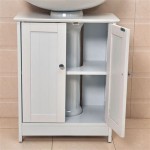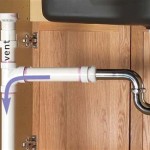Standard Bathroom Drain Pipe Size: A Comprehensive Guide
The plumbing system of a bathroom consists of various pipes, including drain pipes, which are responsible for carrying wastewater away from fixtures such as sinks, showers, and bathtubs. The proper functioning of these drain pipes is crucial for the efficient operation of the bathroom and to prevent any clogs or leaks.
The size of the drain pipes used in a bathroom is a critical factor that determines their capacity to handle the volume of water being drained. Standard drain pipe sizes are established to ensure adequate drainage while minimizing the risk of clogs or backups. In this article, we will discuss the essential aspects of standard bathroom drain pipe sizes and provide guidance on selecting the appropriate size for your bathroom.
Common Drain Pipe Sizes for Bathrooms
The most common drain pipe sizes used in bathrooms are 1-1/2 inches and 2 inches in diameter. Here's a breakdown of the standard sizes:
- 1-1/2 inch drain pipes: These are typically used for drains from bathroom sinks and lavatories that handle a relatively small volume of water.
- 2 inch drain pipes: These are commonly used for drains from showers, bathtubs, and floor drains, as they can accommodate a higher volume of water flow.
Factors to Consider When Choosing Drain Pipe Size
When selecting the appropriate drain pipe size for your bathroom, several factors need to be considered:
- Fixture type: Different fixtures, such as sinks, showers, and bathtubs, have different drainage requirements. It's important to choose a drain pipe size that is compatible with the fixture.
- Volume of water flow: The volume of water flow that the drain pipe will handle is a crucial factor. Showers and bathtubs typically generate a higher volume of water flow than sinks.
- Pipe length and slope: The length and slope of the drain pipe can affect the flow rate. Longer pipes and steeper slopes require larger diameter pipes to maintain adequate drainage.
Consequences of Incorrect Drain Pipe Size
Using drain pipes with an incorrect size can lead to several problems:
- Clogs and blockages: Pipes that are too small for the volume of water flow can easily become clogged, leading to backups and drainage issues.
- Slow drainage: Undersized drain pipes can result in slow drainage, causing inconvenience and potential hygiene problems.
- Leaks and damage: Improperly sized pipes can lead to leaks at the joints or connections, causing water damage to the bathroom.
Professional Installation
It's highly recommended to hire a qualified plumber to install drain pipes in your bathroom. A professional plumber can assess your bathroom's specific requirements, determine the appropriate drain pipe sizes, and ensure the pipes are installed correctly to avoid any future problems.
Standard bathroom drain pipe sizes are essential for ensuring efficient drainage and preventing clogs and leaks. By understanding the common drain pipe sizes, considering the factors that influence size selection, and seeking professional installation, you can ensure that your bathroom's plumbing system functions optimally.

Standard Vanity Height With Vessel Bathroom Sink Drain Kitchen Countertop Faucets

Requiredtoilet Rough In Dimensions Plumbing Residential Bathroom

Rough In Plumbing Bathroom Dimensions Jim The Home Guy
What Plumbing Piece Is Normally Used To Transition From 1 4 Bathroom Sink 2 Drain Pipe Quora

How To Plumb A Toilet Vent Distance Pipe Size
:strip_icc()/SCP_173_04-a5f887244add47e48d7a24d0579341d7.jpg?strip=all)
The Ultimate Guide To Bathroom Plumbing Diagrams And Layouts

Sizing A Plumbing Vent Fine Homebuilding

Pin On Diagram

What Is The Right Size Pipe For Your Main Sewer Line Types And Repairs New Flow Plumbing

What Is The Right Shower Drain Pipe Size
Related Posts







